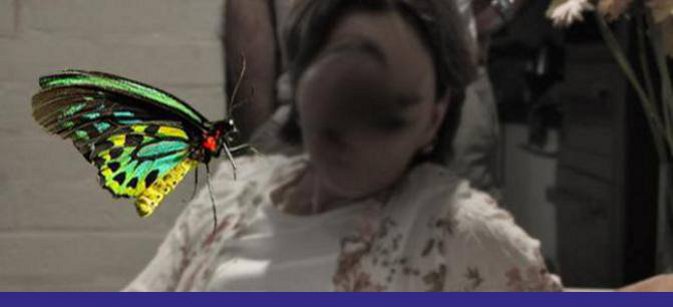
The Foundation recommends the following books as useful starting points into the vision loss field in general and then specifically, CBS. Many of these titles could be available from your local library. If you have low vision, don't forget to ask whether alternate forms such as large print or audio versions are supplied.
Cameron Algie has expertise working in the low vision sector and also draws upon his own personal experience of living with Retinitis Pigmentosa (RP). He was honoured with an Order of Australia medal in 1993. His book (below) is an excellent introduction to the various facets of having to deal with vision loss. It's written in an easy to read format and offers a range of practical suggestions to counter perceived barriers to everyday life challenges. It is of value to those directly affected by vision loss, their loved ones and workers in the sight-impaired sector.
LIVING (BETTER) WITH VISION LOSS
- Cameron Algie (2021) I can see clearly now
-
Lylas G Mogk (1999). Macular Degeneration: The complete guide to saving and maximising your sight
- John Hull (1990). Touching the Rock
CBS SPECIFIC
To whet the appetite:
-
Oliver Sacks (2012). Hallucinations
-
Vilayanur Ramachandran (1998). Phantoms In the Brain
-
Gareth Brookes (2017). A Thousand Coloured Castles [see review below]
-
Lylas G Mogk (1999). Macular Degeneration: The complete guide to saving and maximising your sight (especially the chapter, 'I see purple flowers everywhere'.)
-
Margaret Atwood (2014). Stone Mattress
- Lynne Malcolm (2023). All in the Mind - fascinating inspiring and transformative stories from the forefront of brain science. [includes CBS]
More comprehensive:
-
Schultz, G & Melzack, R (1991). The Charles Bonnet syndrome: 'phantom visual images'. Perception, 20, 809-825.
- Menon, GJ et al (2003). Complex Visual Hallucinations in the Visually Impaired: The Charles Bonnet Syndrome. Survey of Ophthalmology, 48(1): 58-72.
-
Any of the journal articles by Dr. Dominic ffytche (1998 - current).
Brookes broaches hallucinations, illusions and jumping to conclusions (Reviewed by Jennifer Muirden)
A Thousand Coloured Castles is worthy of recognition since it combines wit and a multimodal approach to effectively illustrate the phantom images that a person with the enigmatic neurological condition of Charles Bonnet syndrome may expect to see. Yet it also manages to draw attention to the loneliness and isolation that many elderly people face.
Renowned neurologist Oliver Sacks notably wrote the acclaimed bestseller Hallucinations in 2012 based on anecdotal descriptions of the intricate apparitions experienced by those of his patients afflicted with Charles Bonnet syndrome. While his prose narrative undoubtedly educated and intrigued a wide audience, it is the highly imaginative visual component of Brookes' book that for me enhances the narration with more power and economy ultimately delivering a more memorable and accessible message.
An added surprise for me was a feeling of unsettling anxious anticipation that gripped me while the story about Myriam and her rapidly declining vision unfolds and becomes very much a suspense thriller. It is the subtle alchemy of speech bubbles and wax crayon pictures cleverly created by Brookes which educates and engages its audience with the intention of fostering greater understanding, discourse, empathy and a reduction in anxiety for both Charles Bonnet syndrome sufferers and their loved ones. In this fashion, it may help people gain acceptance of this legitimate condition and learn to live with less fear or to automatically assume they are losing their mind.
There’s one thing for certain: A Thousand Coloured Castles will go a long way in establishing the comic book format as a viable form of educational literature dealing with a serious and substantial issue rather than standard comic books, which are so often concerned with superheroes, science fiction, fantasy or lightweight subject matter.
For more information on Gareth's work click here








